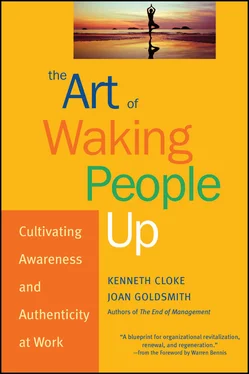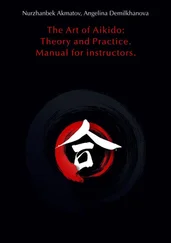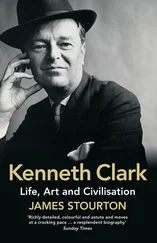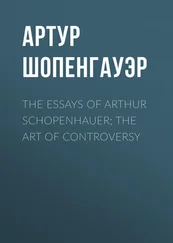The ideal self! Oh, but I have a strange and fugitive self shut out and howling like a wolf or a coyote under the ideal windows. See the red eyes? This is the self which is coming into his own.
The perfectibility of man, dear God! When every man as long as he remains alive is himself a multitude of conflicting men. Which of these do you choose to perfect at the expense of every other?
The very goal of perfectibility emanates from a false assumption that who we are is inadequate. It assumes there is an abstract, ideal, rational state to which we should all conform; that it is important to suppress the parts of our selves that are not perfect; and that it is possible to do so over time without serious personal, organizational, and political consequences. Yet who among us is perfect? Isn’t perfection itself a kind of imperfection and imperfection a kind of perfection? Who is qualified to define the ideal characteristics to which we all must conform? Do not advantages flow from the very flaws we try so hard to discourage? How do we become someone we are not without losing our souls and thereby becoming imperfect? And is not imperfection sometimes simply the voice of a new paradigm pointing to improvement and new possibilities?
Rather than aim at perfection or lofty, idealized, generic standards of behavior, a different approach would be for organizations to provide employees with the unique information, instructions, and support that allow them to do better at whatever it is they want to achieve. This means assisting them—not in accepting historically mandated conditions but in actively transforming these conditions and adapting them to their own visions, styles, and values. It means championing employees who do not conform to ideals of perfection but contribute in unique ways to their colleagues and organizations. It means encouraging people to see their imperfections as sources of learning, growth, and change. It means using turnaround feedback, coaching, mentoring, and assessment to wake people up, transform their organizations, and cultivate awareness and authenticity in their work.
By turnaround we mean using reconfigured organizational processes to take big risks and support change in big ways. By transformation we mean returning to who we are and becoming who we want to be. Turnaround and transformation are achieved by empowering employees to participate fully in making organizational decisions; by encouraging them to take responsibility for the choices they make; by not blaming others for their lack of awareness and authenticity but encouraging them to develop the skills they need to do whatever they choose to do; by bringing them into collaborative, democratic relationships with each other; and by making it possible for them to dedicate themselves to work passionately for what is most important to them.
This may sound easy but is extremely difficult in practice, because it comes with a price. To get there, it is necessary to drop the mask, cut the crap, lose the pose, and become deeply honest—first with ourselves, then with others. We are required to invite disagreeable news, encourage painful feedback, and learn to pick ourselves up by the bootstraps; to take the risk of discovering and being who we actually are—not in isolation, but collaboratively with others. Freedom in this sense is not exercised against others but with and for them.
In rapidly changing work environments, innumerable innovations falter or fail because prudence prompts us to settle for incremental modifications and minor improvements when wholesale transformations are demanded—not only in the things we do but in the ways we do them. To produce transformational results, we require approaches that uncover the real issues, tell the truth, speak in ways people can hear, and support people in doing what they believe is right.
There is a fundamental difference between altering, improving, or correcting something and transforming it or turning it around. Turnaround and transformation are nonlinear, unpredictable, and discontinuous. They occur through choices, leaps of committed action, deep listening, subconscious perceptions, and instantaneous flashes of insight. They take place at a right angle to accepted truth, to what is, to who we think we are.
Sometimes what is turned around is very small and escapes notice because it is so obvious or has been accepted for so long. Sometimes a personal trait is turned around that seemed unimportant at the time, or we assume it is already who we are, or we failed to notice or understand its significance. Sometimes we assume someone else is at fault, or that we are, and miss the fact that fault and blame have nothing to do with solving the problem, they simply keep us locked in patterns we do not like.
A turnaround is a crossroads, a qualitative shift in how we see or think about a problem or in the way we go about solving it. And we are always at such a crossroads at every moment in our lives. Sometimes the crossroads seems faint and distant until events bring it into focus, forcing us to act.
Because turning points are intrinsically unforeseeable, the turnaround approach to feedback, coaching, mentoring, and assessment demands an openness to the unexpected, a responsiveness to paradox and nuance, a search for hidden clues, and a willingness to be astonished. Fundamentally, it does not matter whether the shift is large or small. Small shifts can trigger enormous changes. The trick is to locate the levers, identify the catalysts, and allow learning to produce the acceleration and critical mass needed to break the grip of habit.
The role of turnaround processes and techniques is not only to provide people with the information, encouragement, and support they need to confront their problems, it is to give them the honesty they have a right to receive along with the empathy that allows them to hear it. It is to inspire them to throw away their ideational and emotional crutches and learn to walk on their own, with support from others.
Breaking the Cycle of Distrust
The foundation of all turnaround processes and techniques is trust. There will always be incidents that take people to the edge of their willingness and ability to trust each other. Those who deliver turnaround feedback, coaching, mentoring, and assessment need to build trust by being open and honest enough to relay information that is difficult to hear and empathetic enough to listen and learn. Those who receive it build trust by being willing to translate what they learn into committed action.
Once either side slips into distrust, a self-reinforcing downward spiral begins that seems impossible to escape. Whatever recommendation either side offers for reducing the distrust rings false to the other side. Distrust then feeds on distrust, creating a circular dynamic in which unmet expectations lead to distrust, which triggers self-protecting, trust-breaking behaviors in response. Each side views the other side’s behaviors as hostile or disrespectful and adopts a self-protective stance that causes further distrust, as illustrated in Figure 2.1.

Figure 2.1 Cycle of Distrust.
In this way, distrust becomes a vicious circle from which it seems impossible to escape. Yet turnaround processes and techniques create multiple turning points and openings through which trust can be regained. When we examine these turning points and openings closely, we discover a rich variety of methods for rebuilding trust in relationships. It is possible, for example, to rebuild trust by the following measures:
Читать дальше












